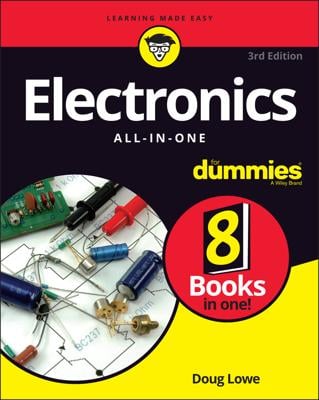Audio speakers are relatively simple devices. Basically, you have an enclosure (typically a box) into which speaker drivers are attached. The drivers are the round elements that many people call the actual speakers (they're not). The drivers look like cones or horns (or even ribbons or domes), and in fact, the large surface area of the drivers is called the cone or diaphragm. These surfaces move back and forth to make the sound. If you have ever pulled the front screen off your speakers or have seen speakers without their front grille on, you've seen the speaker drivers.
Driver sizes
Drivers come in different sizes and modes, but generally, you'll find three types, based on the frequencies they handle:
- Tweeter driver: These handle the high-frequency treble range (above 2,000 Hz).
- Midrange driver: These handle the midrange frequencies (200 Hz to 2,000 Hz).
- Woofer driver: These handle the low-frequency bass range (below 200 Hz).
No single driver is well suited to handle all sounds from 20 Hz to 20,000 Hz; multiple drivers are commonly used to be able to span the full spectrum. A speaker that handles the full frequency is called a full-range speaker.
How drivers work
Speaker driver cones are typically made from paper, plastic, or metal. This material moves back and forth and creates changes in the air pressure (sound waves) that ultimately arrive at your eardrum and cause it to move back and forth in a corresponding fashion. This causes you to hear the sound. The cone is moved by an electromagnetic process that's caused by a coil of wire at the base of the cone, called the voice coil. The electrical impulses coming from the amplifier (or the amplifiers built in to your receiver) drive the voice coil and the voice coil interacts with a permanent magnet attached to the speaker's cone (or dome or whatever shape it may take).
Drivers come in all sorts of different sizes, but in general, the larger the driver is, the lower the frequencies it was designed for. Because higher frequencies require sound waves that have high and low pressure points close together, the cone must be smaller to be able to move back and forth fast enough to keep up. Lower frequencies have to move back and forth more slowly, and smaller drivers have a hard time with these. So you find that drivers are designed for specific audio frequency ranges.
Most speakers that have multiple drivers in their speaker enclosure have crossovers, which divide up inbound speaker signals and distribute them to the appropriate driver.
Drivers in speaker-market lingo
You'll most often run into two types of speakers on the market:
- Two-way: These have a woofer and a tweeter in one speaker enclosure.
- Three-way: These have a woofer, tweeter, and a midrange driver in the same enclosure.
The use of the cone-shaped diaphragm and electromagnetic-powered movement is specific to the class of speakers called dynamic speakers.
You may run across other speakers that are more expensive and are used for specific purposes. In most cases, the following speakers are not recommended for home theater use:
- Electrostatic speakers: Theseare used primarily for stereo audio listening and are rare in home theater systems. They can't handle bass and are rather limited in where and how you position them.
- Planar-magnetic speakers: For similar reasons, these are not likely to be useful for your home theater application because they are best used for the higher frequencies only.
You're better off spending your money on quality dynamic speakers.

